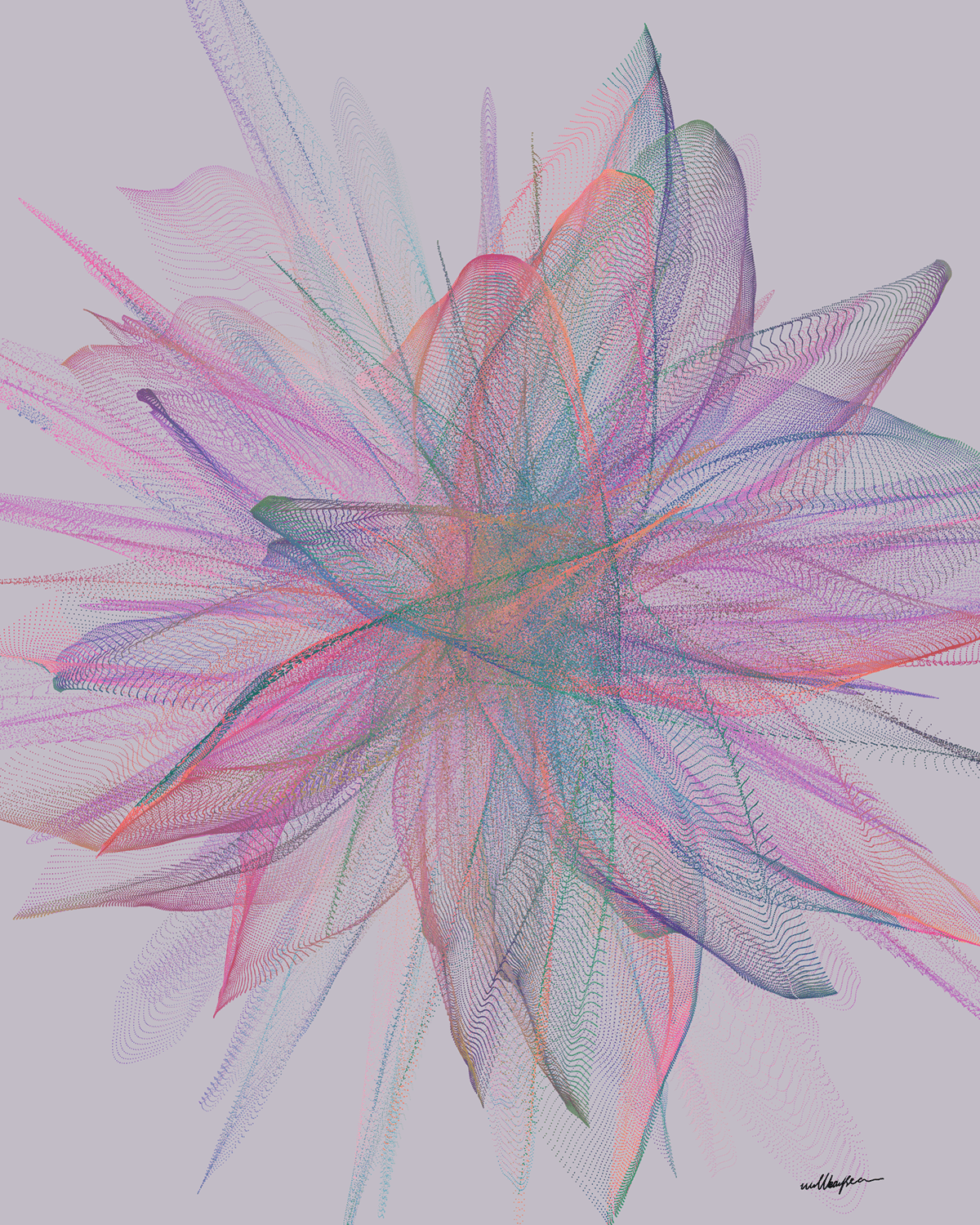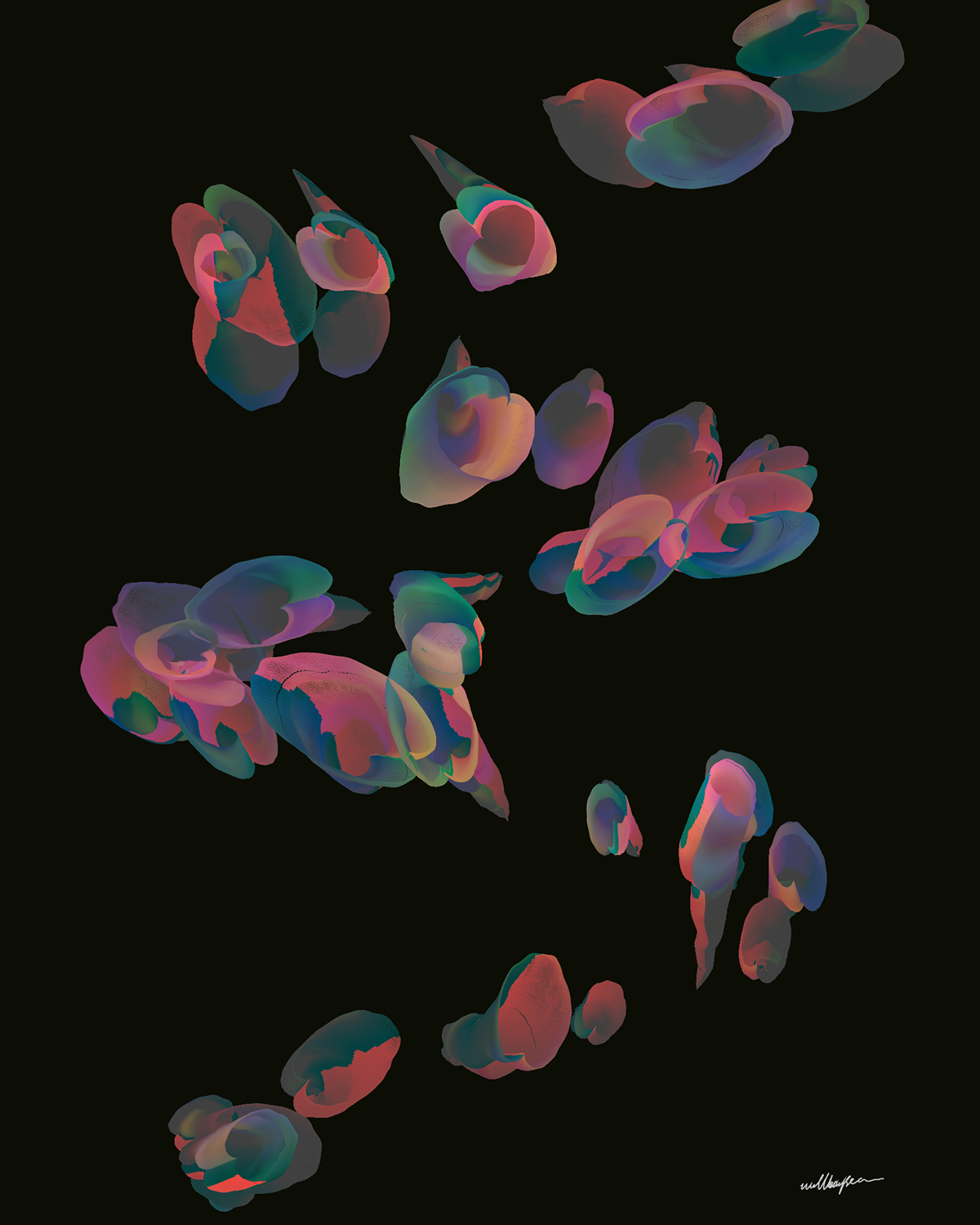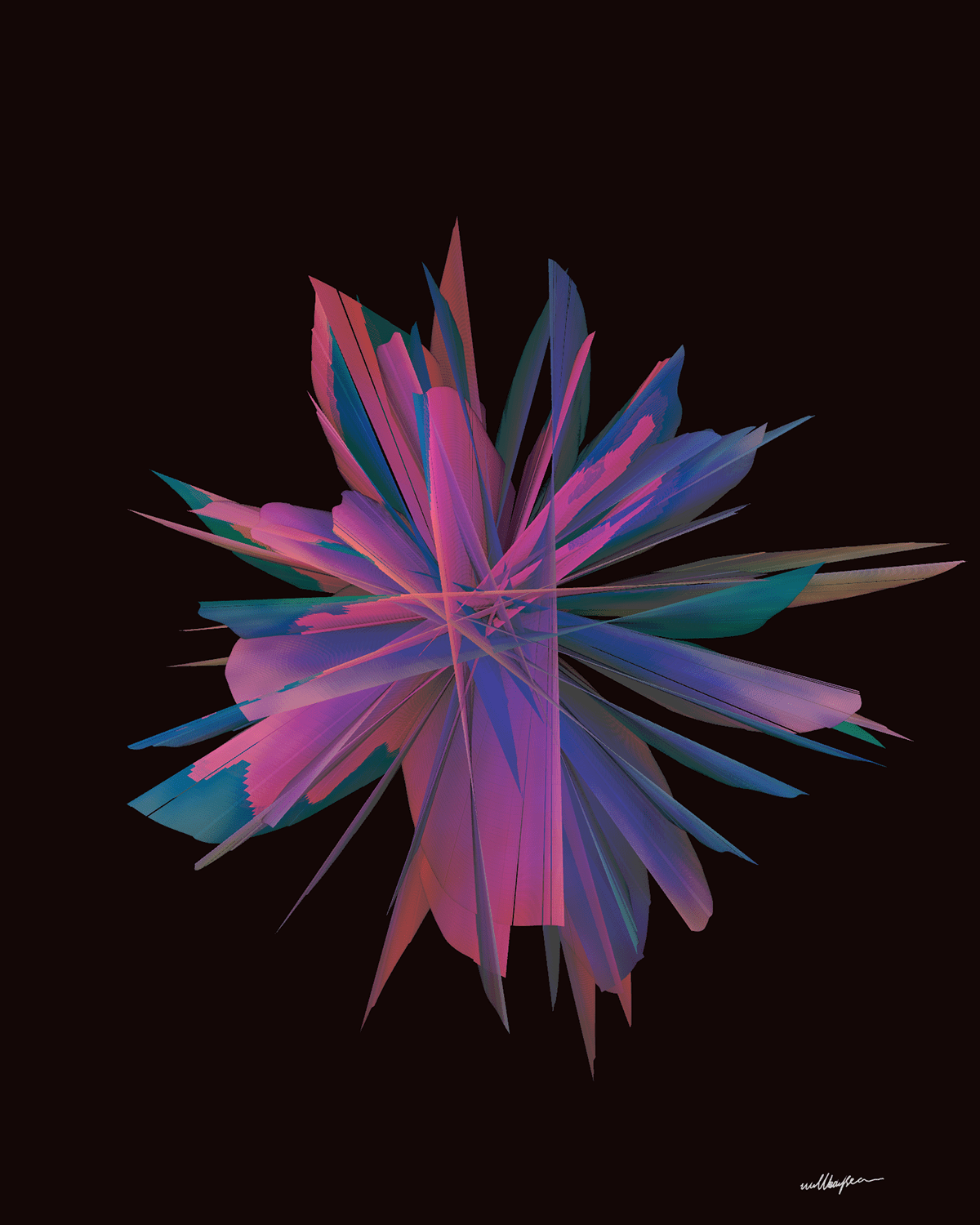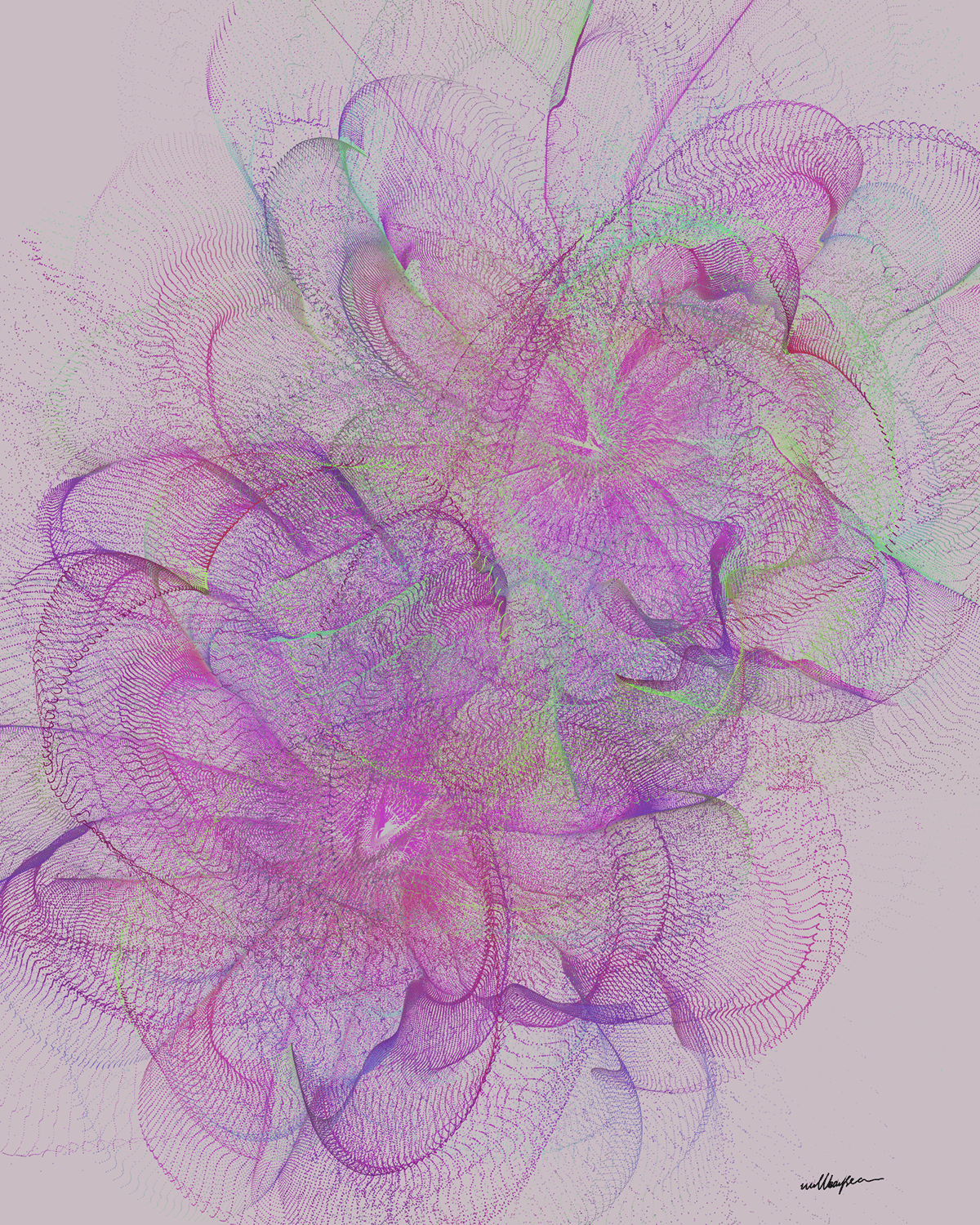InBloom
A generative approach to visualize & animate different forms of the blooming process.
100% generative artwork by p5js
We are experiencing our blooming at different ages of life.
Five particular stages of life (aha moments?) were captured in these aesthetic codes.
stage 1 : ME : self-realization
Started as a single cell(spot) on the stage. By the power of time and experience. We grow and emerge into a bigger self that has unique flaws/beauty. In this stage, we should spend most of our time loving and hating ourselves. It is the privilege of being young.
This stage is all about abusing your YOUTH.
stage 2 : Walk : Appreciate your path
The future is so scary and vague because of its unpredictable nature. Despite blind guessing the upcoming moves, we can study and appreciate our own path and locus. Through this practice, we can find out whether should we follow the locus or should we break the bondage.
This stage is about embracing your CHOICES.
stage 3 : MeetsTheEnd : The you and you in different time
At one moment in life. We start wearing masks and felt pain and frustrated for not being original. One day we will gather all of the personas and formed a circle.
Every version of me confronted each other and start to be a new harmony instead of self conflicts.
This stage is about MATURE.
stage 4 : Reflection : Know Your Enemy
Someone is like a clone of you. The degree of similarity makes you generate two extreme feelings towards this person.
You loved/hated this person very much at the same time. And spend a lot of energy dealing with these bipolar emotions. Instead of sticking to this emotional glue for years, you finally leave this perspective and enter a new way of thinking.
“Co-exist” may be far better than “Together”.
This stage is about DISTANCE AND ACCEPTANCE.
stage 5 : Uprising : Grow With Your Surrounding
Life indeed is a mix of guilt/imperfection/flaw/mistakes and an ever-going path correcting process.
Success in life is not a constant but a calculus formula.
Instead of being CLEVER. You learnt to be WISE.
This stage is about NULL.
About The Visual Presentation
Using micro-structure of petals and other floral parts, with a macro algorithm to form geometric arrangements such as center/sinusoidal/circular/opposite/vertical composition to narrate the above 5 stages of life.
About The Music
Two pieces of music were placed in the work and suggest you experience the work with the music played alongside.
Song one [The Call] mellow piano-bell generates different callings in our life. We as the sound traveled in time from subjective view to objective one by merging with other sound elements in our life.
Song II is more direct, with chords on guitar using Nirvana [In Bloom] as a blueprint, messing around with back and forward power chords on the fingerboard like a life-researcher that traveling his own timeline and attempt to seek wisdom inside this trip.
We never arrive and stop at BLOOM, instead, we are IN BLOOM.
於我,”綻放”絕不僅僅是花朵的某個特定時刻。”綻放”發生在植物整個生命,不同年齡都經歷著它的”綻放”。
我在這些美學代碼中捕捉五個我特別深改的階段。
第一階段:我:自我實現
我們都從舞台上的以單一細胞(點)開始。通過時間和經驗的力量。我們成長並成為一個擁有獨特缺陷/美麗的”我"。在這個階段,我們把大部分時間都花在愛與恨自己之上。這是年輕的特權。
這個階段就是要濫用你的青春。
第 2 階段:步道:欣賞你的路徑
由於其不可預測的性質,未來是如此可怕和模糊。與其盲目猜測我們應該走哪條路,不如我們學習發及觀賞自己過去的道路和軌跡。通過這個練習,我們可以知道我們是應該跟隨軌跡還是應該打破束縛。
這個階段是關於擁抱你的選擇。
第 3 階段:面對:不同時間的你和你
我們開始戴上面具。我們因為這些不像原來的自己的分身而感到痛苦和沮喪。當我們坐下來與所有“面具”圍成一圈時,我們的生命出現另一個通明的時刻,你明白沒有必要再去討厭那些版本的“我”,因為它們本來就應該存在。每個版本的我從互相對抗,開出一種新的和諧,花外有花。
這個階段是關於成熟。
第 4 階段:鏡射:了解你的敵人
在生命中找到一個和你很相似的人。相似程度讓你對這個人產生兩種極端的感覺。
你同時非常愛/恨這個人。並花費大量精力處理這種兩極情緒。與其多年膠著在這種情感裡,你最終選擇離開這個觀點,進入了一種新的思維方式。
“共存”可能比“在一起”要好得多。
這個階段是關於距離和接受。
第 5 階段:起義:與周圍環境一起成長
經過這四個階段,意識到生命是內疚/不完美/缺陷/錯誤的混合,以及一個不斷修正路徑的過程。
生命中的成功不是隨手可得的恆數,而是一則微積分公式。
你不再單純擁抱聰明。你渴望智慧。您接受並閱讀您和他人的缺點和美麗。並為整個構圖成長。
這個階段是”無”。
關於視覺呈現
利用花卉的微觀結構,用宏觀構圖的語法形成中/弦/圓/對/垂等幾何排列組合,表現人生的一些階段。
關於音樂
作品中放置了兩首音樂,建議您在音樂伴奏的同時體驗作品。
歌曲一 [The Call] 柔和的鋼琴鈴聲在我們的生活中產生了不同的呼喚。我們作為聲音,通過與我們生活中的其他聲音元素融合,從主觀視角轉移到客觀視角。
歌曲二更直接,吉他和弦以Nirvana [In Bloom]為藍本,在指板上前後擺弄著和弦,就像一個生命研究員在自己的時間線上旅行,試圖在這次旅行中尋求各種洞見與智慧。
因此,我們從未到達/停留/結束”綻放”。反而,我們正在”綻放”。
Five particular stages of life (aha moments?) were captured in these aesthetic codes.
stage 1 : ME : self-realization
Started as a single cell(spot) on the stage. By the power of time and experience. We grow and emerge into a bigger self that has unique flaws/beauty. In this stage, we should spend most of our time loving and hating ourselves. It is the privilege of being young.
This stage is all about abusing your YOUTH.
stage 2 : Walk : Appreciate your path
The future is so scary and vague because of its unpredictable nature. Despite blind guessing the upcoming moves, we can study and appreciate our own path and locus. Through this practice, we can find out whether should we follow the locus or should we break the bondage.
This stage is about embracing your CHOICES.
stage 3 : MeetsTheEnd : The you and you in different time
At one moment in life. We start wearing masks and felt pain and frustrated for not being original. One day we will gather all of the personas and formed a circle.
Every version of me confronted each other and start to be a new harmony instead of self conflicts.
This stage is about MATURE.
stage 4 : Reflection : Know Your Enemy
Someone is like a clone of you. The degree of similarity makes you generate two extreme feelings towards this person.
You loved/hated this person very much at the same time. And spend a lot of energy dealing with these bipolar emotions. Instead of sticking to this emotional glue for years, you finally leave this perspective and enter a new way of thinking.
“Co-exist” may be far better than “Together”.
This stage is about DISTANCE AND ACCEPTANCE.
stage 5 : Uprising : Grow With Your Surrounding
Life indeed is a mix of guilt/imperfection/flaw/mistakes and an ever-going path correcting process.
Success in life is not a constant but a calculus formula.
Instead of being CLEVER. You learnt to be WISE.
This stage is about NULL.
About The Visual Presentation
Using micro-structure of petals and other floral parts, with a macro algorithm to form geometric arrangements such as center/sinusoidal/circular/opposite/vertical composition to narrate the above 5 stages of life.
About The Music
Two pieces of music were placed in the work and suggest you experience the work with the music played alongside.
Song one [The Call] mellow piano-bell generates different callings in our life. We as the sound traveled in time from subjective view to objective one by merging with other sound elements in our life.
Song II is more direct, with chords on guitar using Nirvana [In Bloom] as a blueprint, messing around with back and forward power chords on the fingerboard like a life-researcher that traveling his own timeline and attempt to seek wisdom inside this trip.
We never arrive and stop at BLOOM, instead, we are IN BLOOM.
於我,”綻放”絕不僅僅是花朵的某個特定時刻。”綻放”發生在植物整個生命,不同年齡都經歷著它的”綻放”。
我在這些美學代碼中捕捉五個我特別深改的階段。
第一階段:我:自我實現
我們都從舞台上的以單一細胞(點)開始。通過時間和經驗的力量。我們成長並成為一個擁有獨特缺陷/美麗的”我"。在這個階段,我們把大部分時間都花在愛與恨自己之上。這是年輕的特權。
這個階段就是要濫用你的青春。
第 2 階段:步道:欣賞你的路徑
由於其不可預測的性質,未來是如此可怕和模糊。與其盲目猜測我們應該走哪條路,不如我們學習發及觀賞自己過去的道路和軌跡。通過這個練習,我們可以知道我們是應該跟隨軌跡還是應該打破束縛。
這個階段是關於擁抱你的選擇。
第 3 階段:面對:不同時間的你和你
我們開始戴上面具。我們因為這些不像原來的自己的分身而感到痛苦和沮喪。當我們坐下來與所有“面具”圍成一圈時,我們的生命出現另一個通明的時刻,你明白沒有必要再去討厭那些版本的“我”,因為它們本來就應該存在。每個版本的我從互相對抗,開出一種新的和諧,花外有花。
這個階段是關於成熟。
第 4 階段:鏡射:了解你的敵人
在生命中找到一個和你很相似的人。相似程度讓你對這個人產生兩種極端的感覺。
你同時非常愛/恨這個人。並花費大量精力處理這種兩極情緒。與其多年膠著在這種情感裡,你最終選擇離開這個觀點,進入了一種新的思維方式。
“共存”可能比“在一起”要好得多。
這個階段是關於距離和接受。
第 5 階段:起義:與周圍環境一起成長
經過這四個階段,意識到生命是內疚/不完美/缺陷/錯誤的混合,以及一個不斷修正路徑的過程。
生命中的成功不是隨手可得的恆數,而是一則微積分公式。
你不再單純擁抱聰明。你渴望智慧。您接受並閱讀您和他人的缺點和美麗。並為整個構圖成長。
這個階段是”無”。
關於視覺呈現
利用花卉的微觀結構,用宏觀構圖的語法形成中/弦/圓/對/垂等幾何排列組合,表現人生的一些階段。
關於音樂
作品中放置了兩首音樂,建議您在音樂伴奏的同時體驗作品。
歌曲一 [The Call] 柔和的鋼琴鈴聲在我們的生活中產生了不同的呼喚。我們作為聲音,通過與我們生活中的其他聲音元素融合,從主觀視角轉移到客觀視角。
歌曲二更直接,吉他和弦以Nirvana [In Bloom]為藍本,在指板上前後擺弄著和弦,就像一個生命研究員在自己的時間線上旅行,試圖在這次旅行中尋求各種洞見與智慧。
因此,我們從未到達/停留/結束”綻放”。反而,我們正在”綻放”。





























